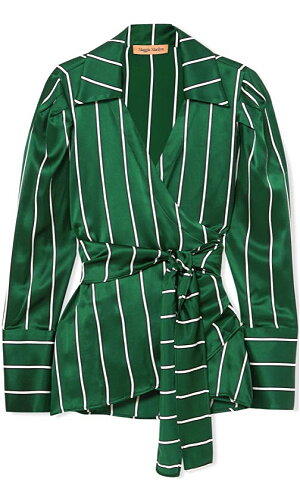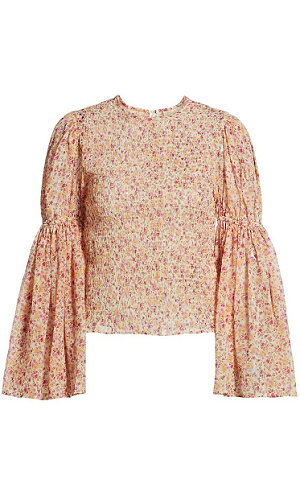Cuffs for Sample
To draw attention away from your bust line, look for interesting cuffs, bracelets, rings and watches.Cuffs
Sleeves sit on the periphery of your body. Where they end, they attract attention to that area. This gives sleeves the ability to highlight or draw attention away from figure challenges.
Examples:
- The hemline of a short-sleeve shirt, if at the same position as the fullest part of the bustline, will visibly increase the size of the bust.
- Tapered sleeves will slim the upper torso, while wide or full sleeves will add weight and width.
- Sleeve fullness and the size of the cuff should be scaled to suit the height, weight and bone structure of the wearer. For example, a petite woman may appear dwarfed by sleeves that are full or very large cuffs.
Appropriate styles are those that suit the wearer's age and environment. A seventy-year-old woman wearing spaghetti straps or a halterneck may give the impression she is not emotionally coping with her advancing age or lacks self-awareness. Sleeveless styles are not considered appropriate for most business environments (except in the most tropical of areas) unless covered by a jacket. Jackets instantly add credibility and professionalism.
Unusual or fashionable cuffs add flair, fashion and individuality to the overall appearance of shirts and blouses. However, be careful that the cuffs do not attract attention to any of your figure challenges. The more elaborate or unusual your blouse, the fewer options you will have when coordinating it with the other garments in your wardrobe and the quicker it will fall out of fashion.
Shoulder pads are an essential accessory for many women. They can make the difference between a woman looking slim and confident or overweight and dowdy. In addition, women with sloping/narrow shoulders, wide waists and hips, or large bust lines will benefit from shoulder pads. However, there are many types of shoulder pads and choosing the right one is essential. Some will need deep, wide pads, while others need thin styles that only add width, not height, to the shoulders.
When checking the suitability of a sleeve in a top, shirt, blouse, dress or jacket against the information in this section, there are four areas to examine:
- The sleeve HEAD (the area where the sleeves join the body of the garment), e.g., Set-in, Raglan, Saddle, and Dropped
- The sleeve STYLE, e.g. Cap, Tapered, Open-shoulder, Short, half etc.
- The sleeve WIDTH, e.g. Three Quarter Wide, Three Quarter Tapered etc.
- The sleeve LENGTH, e.g. Cap, Short, Half, Three Quarter, Full Length










